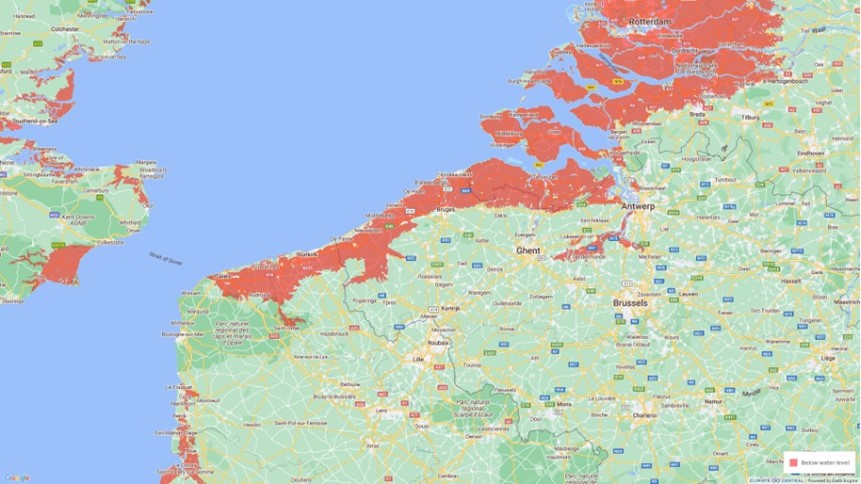Worried about sea level rise at the Belgian coast? Coastal Vision has it covered
There are two primary categories of climate action: mitigation and adaptation. Mitigation aims to reduce the severity of climate change by lowering greenhouse gas emissions and limiting global warming. Solutions[*] for mitigation include swapping fossil fuels for renewables, capturing carbon dioxide emissions at a factory’s chimney or working towards a circular economy. While mitigation efforts are extremely important, it is important to recognize that even if we were to stop emitting greenhouse gases tomorrow, the climate would still undergo changes due to the accumulation of historic emissions that have piled up into the atmosphere. That is why adaptation is also required: making sure we are prepared for the impacts of climate change.
One important effect of climate change is the rise in sea level: as climate change unfolds, melting glaciers and expanding seawater contribute to the overall increase in global sea levels. Although the exact rate of sea level rise remains uncertain, it is certain that it will continue to occur. If no appropriate measures are taken, rising sea levels could have a profound impact on Belgium. The accompanying map illustrates the areas in Belgium that lie below 1.0 meter in elevation and could be at risk from a combination of sea level rise, high tides, and storm surges.

Source: Climate Central
The impact of doing nothing could be enormous, a fact that has been recognized by our government. In the case of coastal protection, Belgium has taken a proactive approach with its Coastal Vision (Kustvisie), which plans for the safeguarding of our coast against sea level rise of up to 3 meters. This forward-thinking approach positions our country as a leader in long-term planning. In the ongoing process, research is done to consider which alternatives are viable to protect our beaches and our harbors, while continuously gathering and implementing feedback from the stakeholders. One important factor is that the alternatives are adaptable, so that they can be built in phases and grow with the rising sea level.
Econopolis Strategy has the privilege to be part of this ongoing project, analyzing the economic implications of each alternative. If your interest is piqued, we encourage you to learn more by visiting https://www.vlaanderen.be/kustvisie.
[*] Curious about what solutions are interesting for Belgium? In de Klimaatschok Geert Noels, Kristof Eggermont, and Yanaika Denoyelle present 20 climate solutions for Belgium and calculated their potential greenhouse gas emission reduction.